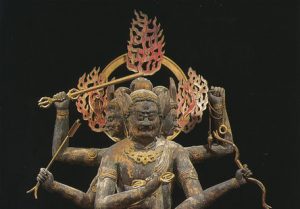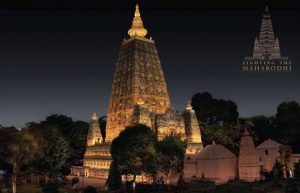Editor’s Note: Dr. Andrey Anatolyevich Terentyev studied Sanskrit, Tibetan and Indian Philosophies and Religions. He obtained his Ph.D. in the field of Oriental Studies (Russia). Currently, he is a visiting lecturer at the International Buddhist College.
Buddhist art is a precious part of our human cultural heritage. Thousands of masterpieces of Buddhist art are kept in museums and private collections all over the world and numberless Buddhist monuments adorn the lands of many countries. Buddhist art can be approached from numerous perspectives. Here we shall try to understand the meaning of Buddhist art in the context of Buddhism itself. We shall explore how the Buddhist art – ‘visual Dharma’ – presents the Buddha’s Teachings, and how it is used for the purpose of teaching. Our main focus, therefore, is not the history of Buddhist Art, but the meanings hidden in its iconography.
What is religious art needed for in Buddhism?
1. Primarily, it is to inspire and enhance spiritual progress. Take the story of the first Buddhist painting: when ‘the wheel of existence’ (Sanskrit, ‘bhavacakra’), drawn under the personal directions of the Buddha, was presented to King Udrayana as a gift from King Bimbisara, Udrayana, having meditated on it throughout the night, reached the level of ‘non-return’ – progress which would otherwise take years, or even lifetimes.
2. Buddhist art is believed to be able to transmit blessings, or the inspiration of great masters. As the Lotus Sutra says:
If even he, whose sight is far from pure,
The image of Sugata on the wall will see –
some later day millions of Tathagatas will he meet!
In some cases one can even reach liberation just by looking at an image of the Buddha – what is called in Tibetan mthong sgrol – ‘Liberation [through mere] seeing’.
3. Art is also used to facilitate meditation and different ritual practices. The Buddha image, for example, serves as a base for shamatha meditation, and different Tantric images are needed for certain initiation ceremonies, et cetera.
4. Images are created and worshipped for collecting merit.
Sacred images, such as clay tsa-tsa, sculptured or painted images.
5. Buddhist art may remind the viewer of the meaning of the Dharma: ‘… if you have the inner experience of what the [image] symbolizes, every time you see a Mahayana painting, a deep positive imprint is placed upon your mind, and you receive transcendental wisdom. In fact, these paintings are talking to you, beyond words’ – Lama Yeshe, Becoming Vajrasattva: the Tantric Path of Purification. Wisdom Publications, 2004, p. 44.
How to relate to Buddhist art
For a Buddhist, any Dharma images or symbols belonging to any Buddhist tradition or place of origin are associated with the Awakened one and must thus be treated respectfully, regardless of the materials they are constructed from and their artistic quality. An example of this was set by the Indian sage Atisha, who, when asked by a student, ‘Is this statue of Manjushri good or bad?’ answered, ‘The body of the sublime Manjushri cannot be ‘bad’, but the sculptor’s work is mediocre.’ Atisha then blessed himself with the statue. Similarly, the sacred images of other religions should be treated respectfully.
















